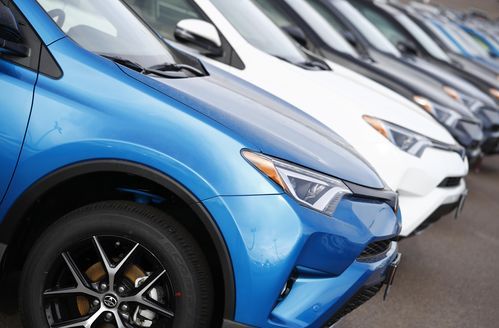John Lippert and Todd Shields, Bloomberg Published 2:30 p.m. ET April 16, 2018

Toyota says it will start equipping models with technology to talk to other vehicles starting in 2021, as it tries to push safety communications forward.
(Photo: David Zalubowski / AP, file)
Toyota Motor Corp. laid out plans to start putting short-range communications chips in U.S. vehicles in the next three years, staking out its position in a battle to make cars safer by getting them to “talk” with one another.
The third-best selling automaker in America will put the chips in Toyota and Lexus models in the U.S. starting in 2021, said Andrew Coetzee, group vice president of product planning for North America. The technology will enable cars to send data on their location and speed to surrounding vehicles and roadside infrastructure to curb crashes.
By making the plan public, Toyota is escalating a campaign to get the rest of the auto industry – and regulators – to embrace the technology. It’s also headed for a clash with phone companies that would rather see carmakers embrace 5G cellular networks to accomplish the same task, and with tech giants and cable providers that are angling for access to the same airwaves.
The dedicated short-range communications systems Toyota will start using, known as DSRC, send information back and forth to one another several times a second and can alert drivers to potential collisions before they happen. A broad coalition of auto companies, including Toyota and General Motors Co., urged U.S. Transportation Secretary Elaine Chao in November to support a “talking cars” mandate for all new passenger vehicles by 2023.
“We need to make a technology choice when there’s no regulatory requirement in place,” John Kenney, director of networking research at the Toyota InfoTechnology Center in Mountain View, California, said by phone. “What we’re doing today is speaking up and saying We will deploy DSRC technology and we encourage other automakers to do the same.’”
When the Transportation Department released a proposal for the requirement in December 2016, regulators under the Obama administration estimated the technology could prevent or mitigate 80 percent of vehicle crashes not influenced by driver impairment.
But the push for a vehicle-to-vehicle, or V2V, communications rule has stalled amid President Donald Trump’s drive to deregulate. The mandate also ran into pushback from the lobbying group for technology companies including Apple Inc., Google, Facebook Inc. and Amazon.com Inc., which favors sharing the airwaves.
The primary cable industry trade group has said the National Highway Traffic Safety Administration overstepped its authority by seeking to indirectly influence wireless spectrum policy overseen by the Federal Communications Commission.
Coetzee said he’s not convinced automakers should share the spectrum band with cable or tech companies.
“We need to make sure we’re got super, super reliable and very quick transmission speeds,” Coetzee said. “More testing will be needed to show you can do this” while sharing airwaves.
Read or Share this story: https://detne.ws/2HHLUPq
